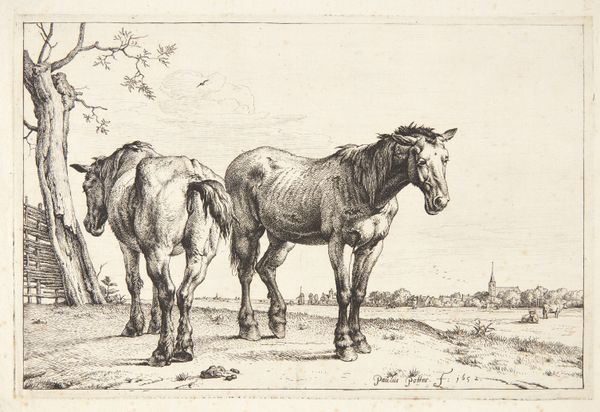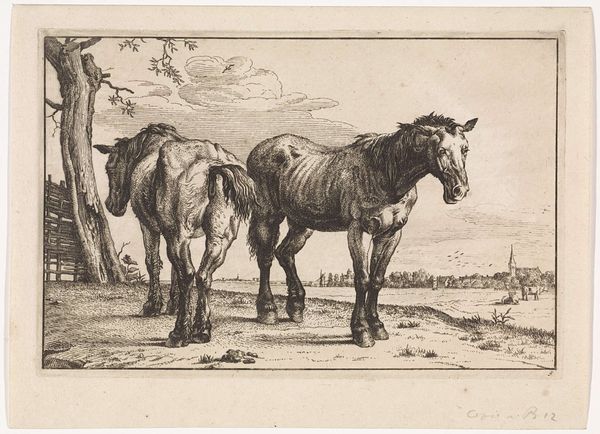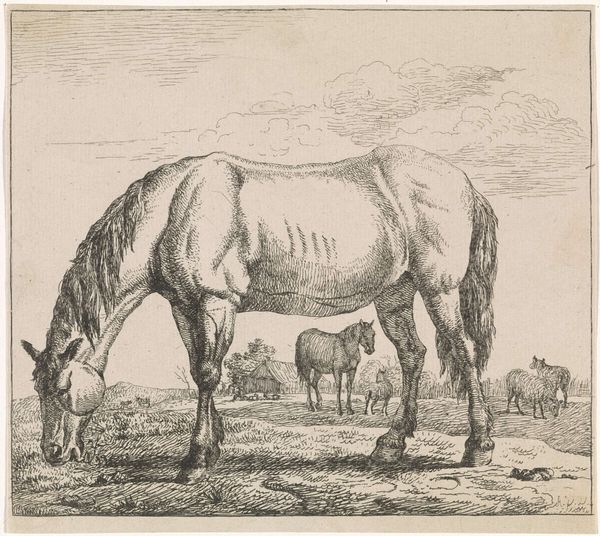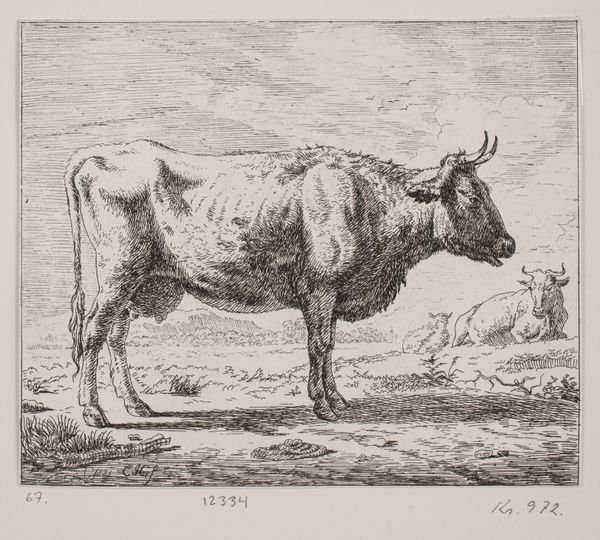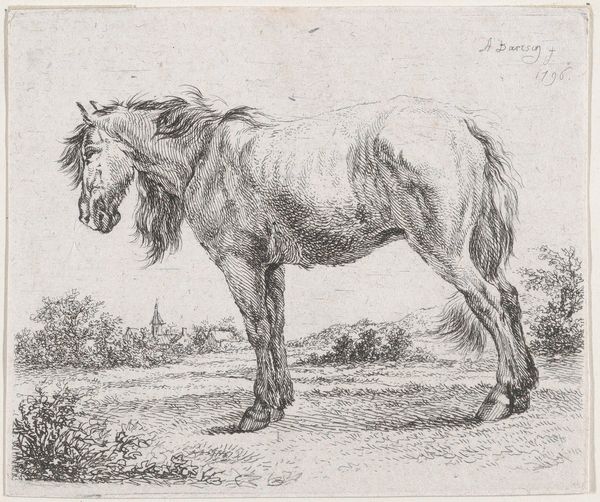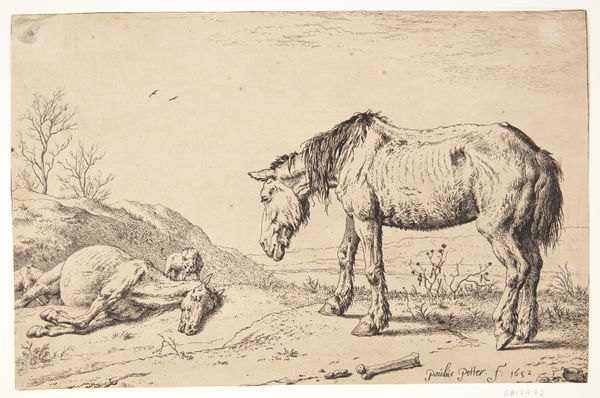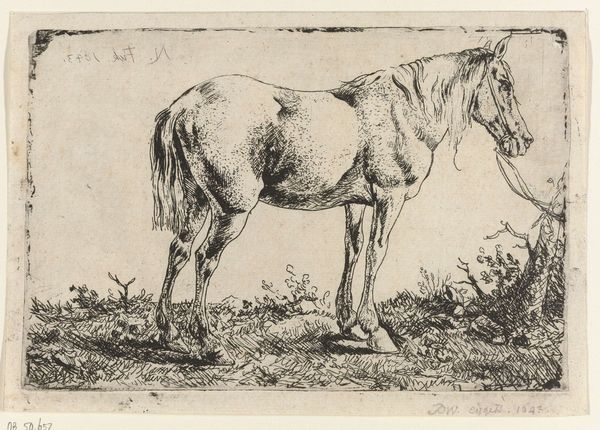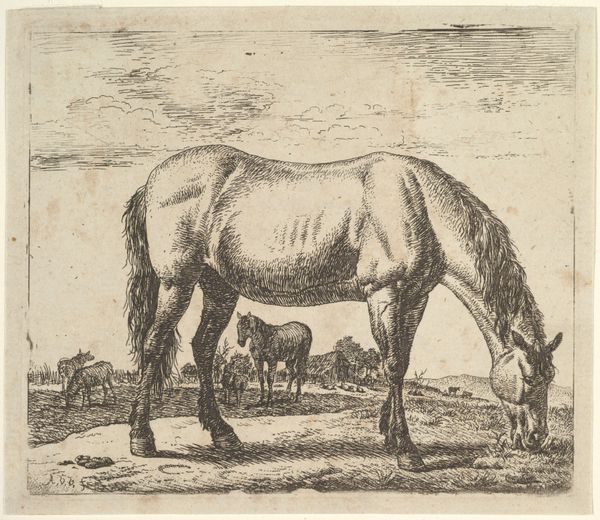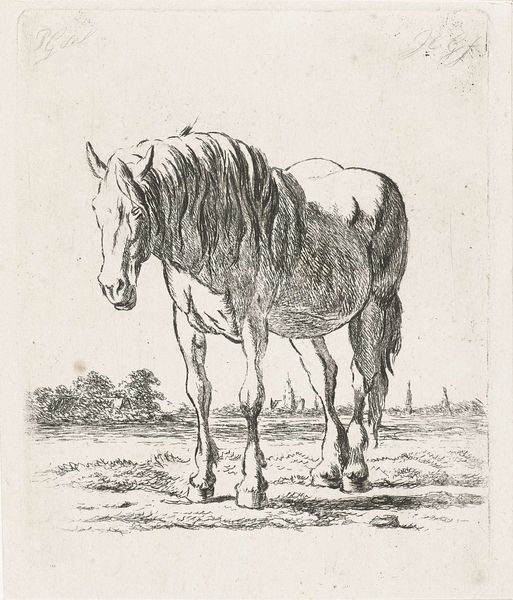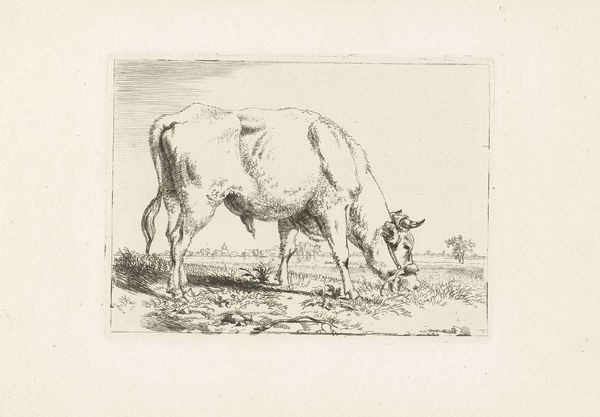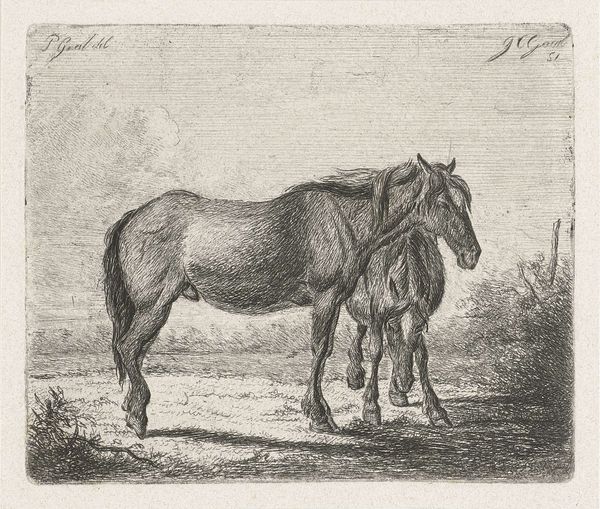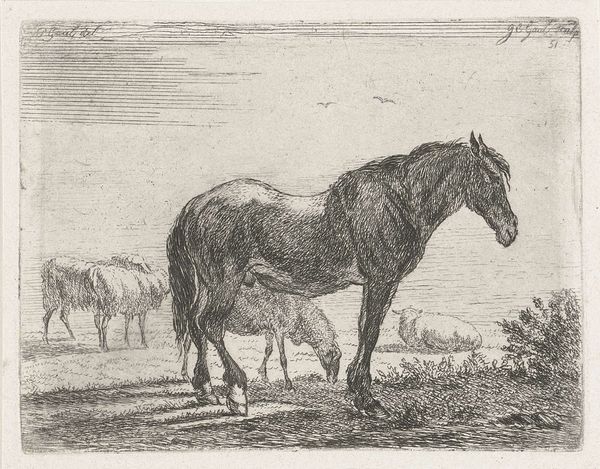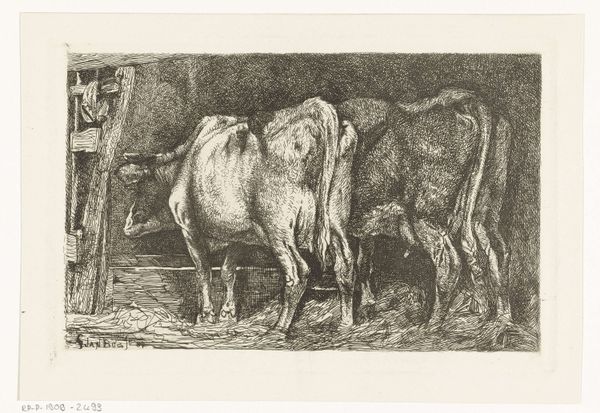
print, etching
#
animal
#
dutch-golden-age
# print
#
etching
#
landscape
#
figuration
#
realism
Dimensions: 103 mm (height) x 161 mm (width) (plademaal)
Curator: So, let’s take a look at "Heste og køer," which translates to “Horses and Cows.” This etching, made by Jan van den Hecke I sometime between 1619 and 1684, offers a glimpse into rural life during the Dutch Golden Age. It’s currently housed here at the SMK, Statens Museum for Kunst. What's your first take? Editor: Immediately, there's this overwhelming sense of pastoral serenity. It’s almost melancholic, with the animals seeming so calm and ordinary in a very deliberate composition. There is no action but one of almost suspended time in this Dutch rural scene. It feels like an argument for a slower life. Curator: Exactly! During the Dutch Golden Age, the representation of rural life became increasingly popular, often reflecting a sense of national pride and identity rooted in the land. But beyond the romantic idyll, we should also ask who has the privilege of pausing time to admire pastoral scenes in an economy powered by colonialism. Editor: I agree, especially with depictions of animals. It invites viewers to romanticize labor without actually interrogating their lived experience. Curator: Hecke, who was also a tapestry designer, creates a landscape using very controlled marks of the etching needle, but with this print, it allows wider access to art ownership beyond tapestries and painting. It reflects a growing market for art among the burgeoning middle class in Dutch society. And this is reflected in art academies. Editor: Definitely, the subject of domesticated animals ties back to themes of ownership and control over the natural world. This print does, though, present a straightforward glimpse into that reality—it seems intended for someone to feel grounded, literally and figuratively, in a way that speaks to the time's social landscape. It shows animals simply existing together in harmony—the contrast with city life. Curator: Absolutely. Prints like these helped to shape a collective vision of Dutch identity and served as visual reminders of the social order during that era, so there is tension. Hecke gives an interesting perspective that we still interpret and admire now. Editor: Indeed. Thinking about the modern context, "Heste og køer" sparks conversations about our relationship with labor and the land, our own nostalgic tendencies, and also how we frame historical periods. The artist offered an unvarnished depiction, and that honesty holds a rare quality.
Comments
No comments
Be the first to comment and join the conversation on the ultimate creative platform.
